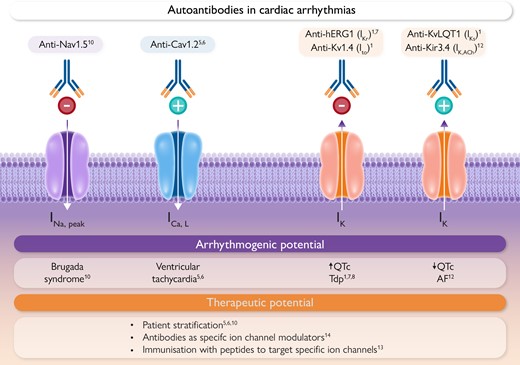-
Views
-
Cite
Cite
Funsho E Fakuade, Jana Grune, Niels Voigt, Cardiac arrhythmias: the growing role of autoantibodies in diagnosis and treatment, European Heart Journal, Volume 45, Issue 40, 21 October 2024, Pages 4349–4351, https://doi.org/10.1093/eurheartj/ehae648
Close - Share Icon Share

Role of autoantibodies against atrial and ventricular ion channels in cardiac arrhythmias and their therapeutic potential. Autoantibodies targeting various cardiac ion channels can have inhibitory (−) and stimulatory (+) effects on depolarizing (purple: INa,peak and ICa,L) and repolarizing (green: IK) ion currents, contributing to pathogenesis of various cardiac arrhythmias, including atrial fibrillation (AF). Additionally, autoantibodies may offer opportunities to develop specific and personalized antiarrhythmic therapeutic approaches. For a detailed explanation, please refer to the text. INa,peak, peak sodium current; ICa,L, L-type-calcium current; IK, potassium current; QTc, corrected QT-interval; Tdp, Torsades de pointes tachycardia.





